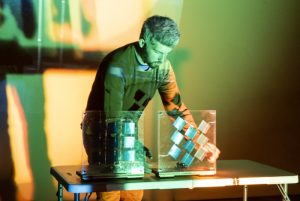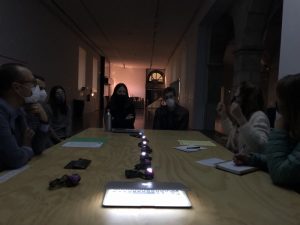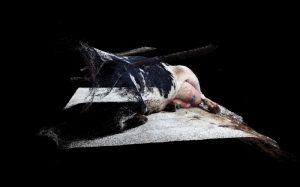Instead of following my natural instinct and turn this blog into the usual happy bordello where unrelated posts follow one another, i’m going to try and focus my reports over the next few days on the projects i saw last week at the RCA Graduate Summer Show in London.
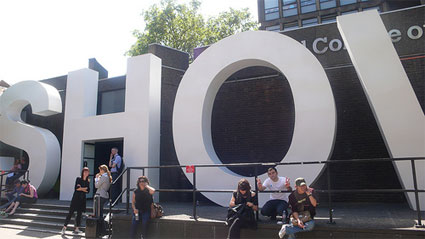 Revital Cohen‘s final project at the Design Interactions department looked at how cross-breeding man with machines or other species can open up new design opportunities and a space for debate (see her previous project the Telepresence Frame.) I realize that most of the readers are familiar with this concept of ‘design for debate’ but to avoid any misunderstanding, let’s just remind that design for debate explores how design can be used as a medium to draw attention to the social, cultural and ethical implications of new technologies. The resulting design proposals do not provide answers, but they make complex issues tangible, and therefore debatable (via).
Revital Cohen‘s final project at the Design Interactions department looked at how cross-breeding man with machines or other species can open up new design opportunities and a space for debate (see her previous project the Telepresence Frame.) I realize that most of the readers are familiar with this concept of ‘design for debate’ but to avoid any misunderstanding, let’s just remind that design for debate explores how design can be used as a medium to draw attention to the social, cultural and ethical implications of new technologies. The resulting design proposals do not provide answers, but they make complex issues tangible, and therefore debatable (via).
Revital’s Life Support project looks for way of disconnecting people from the therapeutic machines and cold technologies they are harnessed to. Assistance animals – from guide dogs to psychiatric service dogs and other emotional support animals – unlike machines, can establish a natural symbiosis with the patients who rely on them. Would it be possible to go a step further and transform animals into medical devices?
This project proposes using animals usually bred commercially for consumption or entertainment as companions and providers of external organ replacement, offering an alternative to inhumane medical therapies.
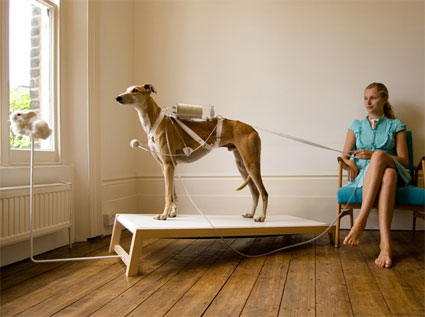
The first part of the project revolves around a concept of Respiratory Dog. Today greyhound racing remains a very lucrative business. Tens of thousands of these dogs are bred annually in an attempt to create the fastest dogs. Most of them are killed if at any time it is determined that they don’t have potential to be good racers. The dogs are a mere commercial product and because they constitute a major expense, many of them are killed as soon as it is determined that they don’t have value anymore as a racer at a track.
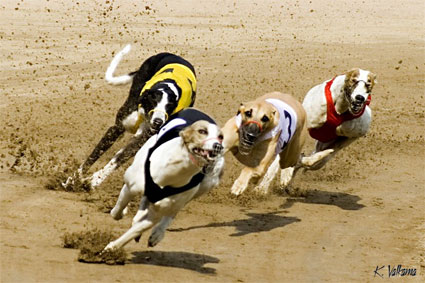 Greyhound race. Image Valkama
Greyhound race. Image Valkama
In 2003 alone, an estimated 7,500 to 20,000 greyhounds were euthanized simply because they couldn’t run fast enough. There are more heart-breaking (even for me who could never be accused of being dog’s best friend) facts about their sad existence on the PETA website.
In Revital’s scenario, a pedigreed greyhound spends the first twelve months of his life being trained by the racing industry to chase a lure. Over the next three to five years the dog spends his days at kennels and is taken racing weekly to make profit for its owners.
So far, nothing new. However, as soon as its time has come to retire from the racetracks, the greyhound is not euthanised (as happens nowadays to thousands of retired greyhounds), it is collected by the NHS and goes through complimentary training in order to become a respiratory assistance dog.
When training is completed, the greyhound is adopted by a patient dependent on mechanical ventilation and begins a second career as a respiratory ‘device’. The greyhound and its new owner develop a relationship of mutual reliance through keeping each other alive.
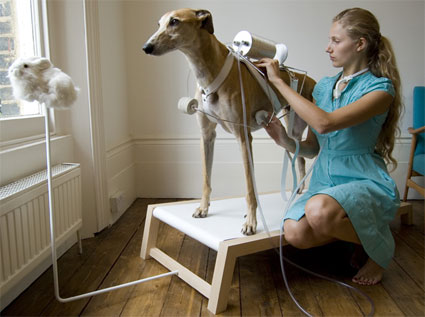
A new apparatus is used to converts the greyhound’s lung movement into mechanical ventilation: the dog is fitted with a harness and placed on a treadmill where it will start running, stimulated by the same mechanical lure employed in its previous training. The treadmill functions as the interface and on/off switch. The harness uses the dog’s rapid chest movement to pump a bellows that pushes air into the patient’s lungs.
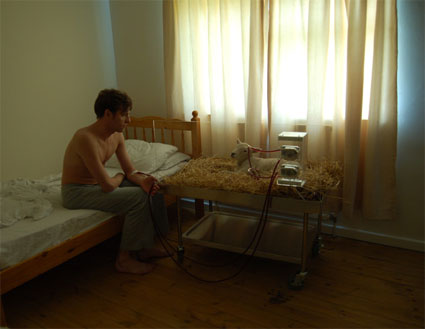
A second scenario envisions substituting a dialysis machine with a sheep. The concept is inspired by several advances of science such as the creation of cows and sheep cloned to have human blood in their bodies. Much research is also carried out to design animals which would carry organs compatible with humans. When one organ would be needed for transplantation the animal would probably be killed to provide the precious body part.
On the other hand, current, mechanical, dialysis treatments are far from being perfect.
Revital’s scenario imagine that, in the future, a patient suffering from kidney failure would give a blood sample to lab scientists who then isolate in the genome the regions that code for blood production (bone marrow tissues), and immune response (the major histocompatibility complex), extract the genome from the nucleus of a somatic cell taken from a sheep and substitute the corresponding regions of the sheep’s genome with the DNA from the patients’ genome.
This recombinant DNA is then inserted into the nucleus of a pre-prepared sheep egg cell. After cell division in the egg is initiated, the egg is implanted into a surrogate ewe which will eventually give birth to a transgenic lamb.
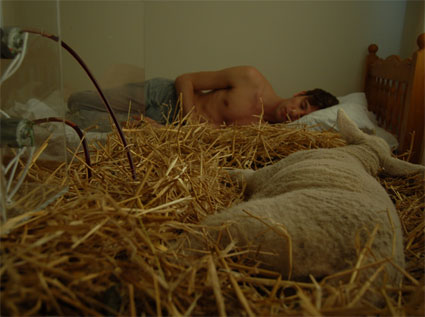
During the day, the dialysis sheep roams in the donor patient’s back garden, grazes to cleanse its kidneys, and drinks water containing salt minerals, calcium and glucose.
At night, the sheep is placed at the patient’s bedside. The transgenic sheep’s kidneys are connected via blood lines to the patient’s fistula (a surgically enlarged vein). During the night, waste products from the patient’s blood are pumped out of the body, filtered through the sheep’s kidney and the blood is returned, cleaned, to the patient.
This happens over and over again throughout the night. The day after, the sheep urinates the toxins.
Related: Utility Pets, myBio dolls, The Race, health benefits of robotic pets.

